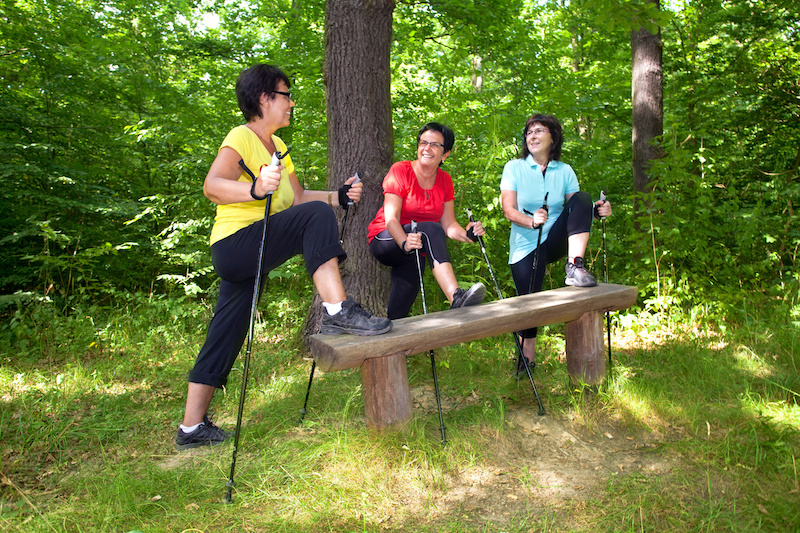As delightful as summer picnics are, one of the risks you run anytime you’re outdoors is being bitten by a tick. This is particularly concerning if you happen to be bitten by a deer tick, a common carrier of Lyme disease. In the event you are the victim of such a bite, it’s important that you know the methods for managing Lyme disease (or any other chronic condition). Regular screenings, a healthy lifestyle and frequent exercise can assist you with having the best possible outcome.
What is Lyme Disease?
Lyme disease involves four main species of bacteria: Borrelia burgdorferi, Borrelia mayonii, Borrelia afzelii and Borrelia garinii. The first two species are more prominent in the United States, while Borrelia afzelii and Borrelia garinii are usually responsible for Lyme disease in Europe and Asia.
Bacteria multiply and spread rapidly so you need to act quickly if you think you’ve been infected. The most recognized symptom of Lyme disease is a rash called erythema migrans. This symptom occurs in 70 to 80 percent of infected persons and exhibits the following traits:
- Typically takes the shape of a bull’s-eye pattern
- Slowly expands up to 12 inches in diameter or more
- Is usually not itchy or painful
- Begins to form three to 30 days after a tick bite
- Can appear anywhere on the body

Foregoing treatment for Lyme disease can lead to further complications. New symptoms that may appear within weeks or months following a bite include:
- Intense headaches and neck stiffness
- Arthritis with severe joint pain and swelling
- Additional erythema migrans
- Loss of muscle tone or droop on one or both sides of the face
- Temporary paralysis of one side of the face
- Weakness and numbness of limbs
- Pain in tendons, muscles, joints and bones
- Impaired muscle movement
- Heart problems, such as palpitations or arrhythmias
- Dizziness
- Inflammation of the brain (meningitis) and spinal cord
- Nerve pain
- Numbness or tingling in the hands or feet
- Problems with short-term memory
- Nausea and vomiting
- Eye inflammation
- Liver inflammation (hepatitis)
- Severe fatigue
How Is It Diagnosed?
If you think you might have Lyme disease, it’s crucial to get help right away. You may not remember being bitten, or maybe you carefully plucked out the deer tick when you found it (after screaming in horror). Don’t take your chances; visit a medical center immediately. Consider keeping the tick after removal by putting it in a sealed jar with alcohol or by taping it to a piece of paper. This may be useful if you need to confirm the species.
Many symptoms of Lyme disease are similar to other illnesses, such as the flu, so diagnosis can be tricky. It can be helpful to your clinician if you jot down any notes that might be useful before your visit, such as when your symptoms first appeared and if you were in an area where Lyme disease is common.
Along with a thorough physical exam, clinicians will administer laboratory tests such as an ELISA test or Western blot test to check for the presence of antibodies. These tests are generally more reliable after a few weeks have passed.
Treating Lyme Disease
Treatment for Lyme disease is much more effective if started early – you don’t want the disease to spread to other areas of the body. See a medical clinician even if your symptoms disappear. It doesn’t mean the disease is gone.
Since Lyme disease can progress into much more severe conditions, treatment depends on the disease stage and what types of symptoms are present. The good news is that most people will respond very well to a course of antibiotics if the disease is caught early. For individuals with more advanced stages of the disease, IV antibiotic therapy may be required for managing Lyme disease in an inpatient setting.
Managing Chronic Lyme Disease
Following treatment, you may experience continued post-Lyme disease symptoms, such as joint pain, fatigue, brain fog and headaches. In the medical community this is sometimes referred to as chronic Lyme disease. Since these symptoms often overlap with other health issues, it’s important that you maintain follow-up appointments with your health care provider to rule out other medical conditions. Seeking continued treatment will help accelerate your recovery and improve your quality of life as you regain your health.
Chronic Lyme disease can be a long-term, debilitating challenge, so you’ll need an experienced team of clinicians to help you tackle it from all angles. LifeStyle Medical Centers is dedicated to helping you get back on your feet in every sense. Our combined treatment approach incorporates stellar medical care, teaching you about healthy lifestyle changes and providing ongoing support.
Don’t forget that exposure to Lyme disease doesn’t mean you’re immune. Our staff at LifeStyle Medical Centers can educate you on how to prevent further infection down the road. There’s no need to give up hiking – you can decrease your risks for contracting Lyme disease with a few simple precautions. And while your Lyme disease symptoms persist, we’ll help you manage them.
Sources:
http://www.ncbi.nlm.nih.gov/pubmedhealth/PMHT0025348/
http://www.mayoclinic.org/diseases-conditions/lyme-disease/basics/definition/CON-20019701
http://www.cdc.gov/lyme/index.html
https://www.nlm.nih.gov/medlineplus/lymedisease.html
http://www.uptodate.com/contents/lyme-disease-treatment-beyond-the-basics?view=print


